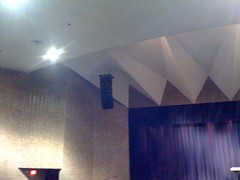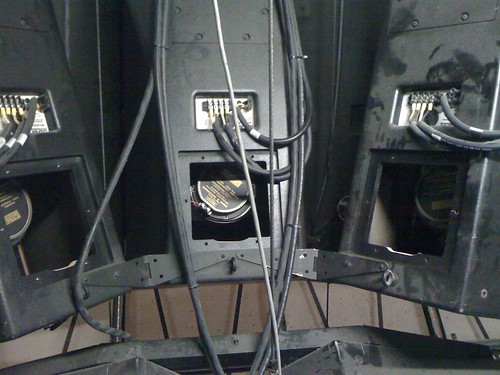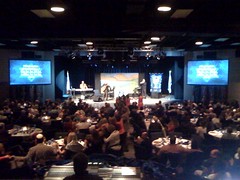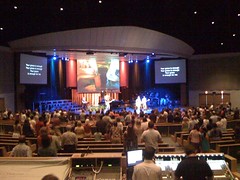 I have been reminded over the past few weeks of why so much attention must be put into designing things and processes. I don’t know where I heard it or who said it but it took me a while to understand the following statement “a properly designed road shouldn’t need traffic signs”. If you drive, have you ever seen a sign that was only needed because the road was not designed right or because of it’s surroundings was forced to be built in a way that required some form of instruction?
I have been reminded over the past few weeks of why so much attention must be put into designing things and processes. I don’t know where I heard it or who said it but it took me a while to understand the following statement “a properly designed road shouldn’t need traffic signs”. If you drive, have you ever seen a sign that was only needed because the road was not designed right or because of it’s surroundings was forced to be built in a way that required some form of instruction?
Some years back when I was in high school and college, I had the opportunity to work in a millwork shop. When we would build a cabinet door, we would usually install a door pull handle. Many times the door was easily opened without the handle, but by adding it anyone opening the door nows how it will open and which side to pull on. Same types of things applied to my IT positions. Lots of coders and interface designers try to write software and design interfaces that don’t require a user manual. Now as a producer that works with volunteers, I am constantly refining my processes and equipment to help the end user succeed. Something as simple as the order of the channels on a sound console can make a big difference is the success of the audio engineer.
If you are the designer and the end user then you have a fairly easy task. It never ceases to amaze me how something that I think makes perfect sense can be a challenge to some one else. So what is the key to good designs and processes? Observation and revision. My Grandfather told me about serving in the Pacific in World War II and the developments in anti-aircraft shells. A new shell was developed that could detect if an aircraft was in it proximity and it would explode. This is great stuff and eliminated the need for altitude fuses. The problem was if the shell didn’t find a plane it would not explode in the air and on its way down if a ship was in the area it would explode. The designers didn’t think of this issue and only after observing it in action, did they decide to make a modification so that it would explode at a set altitude if no planes were detected in it’s proximity.
Take the time to review your designs and processes in action with an open mind and make the necessary updates so that your users will succeed.




 This week we are installing a couple of new DSP units in the worship center. BSS London Blue 80s are the new brains for our audio system. In the process of testing everything last night we found the the protection circuits are bad in three of our EAW MH-662iA speakers. This has been limiting some of the high frequencies from the main center cluster. Now we have to figure out how to fix them. So again I will be excited to hear what the system is going to sound like after we get this fixed and our system tuner James Young is done with the DSP upgrade and room tuning. Going to be a fun Sunday.
This week we are installing a couple of new DSP units in the worship center. BSS London Blue 80s are the new brains for our audio system. In the process of testing everything last night we found the the protection circuits are bad in three of our EAW MH-662iA speakers. This has been limiting some of the high frequencies from the main center cluster. Now we have to figure out how to fix them. So again I will be excited to hear what the system is going to sound like after we get this fixed and our system tuner James Young is done with the DSP upgrade and room tuning. Going to be a fun Sunday.
 This Sunday I will say goodbye to the first lighting console that I ever programmed on. We have not had too much trouble with the Avolites Pearl console other then floppy drives going out. So why make the change? We have just made a switch in the way that we program. When I started working with the lights it was very manual and not much programming. Over the time that we have gone to the other extreme. Today we program cue to cue for all three services. Avo has a theater stack mode, but it is not the most user friendly to work with and I started looking for something different. I spent much time reviewing products and got as many recommendations as I could. All roads seemed to lead to one place, Jands Vista products.
This Sunday I will say goodbye to the first lighting console that I ever programmed on. We have not had too much trouble with the Avolites Pearl console other then floppy drives going out. So why make the change? We have just made a switch in the way that we program. When I started working with the lights it was very manual and not much programming. Over the time that we have gone to the other extreme. Today we program cue to cue for all three services. Avo has a theater stack mode, but it is not the most user friendly to work with and I started looking for something different. I spent much time reviewing products and got as many recommendations as I could. All roads seemed to lead to one place, Jands Vista products. There is lots to love about the Vista product line. You can start with a PC or Mac based solution with just 128 DMX channels or have a large console with 8 or more DMX universes. We decided that it was a full range solution that we could standardize on campus wide. It also gives us the ability to make changes from our workstations. We had a way to program the Avo on the computer, but it is very slow process. Vista is almost as fast to program on your computer as it is on the console.
There is lots to love about the Vista product line. You can start with a PC or Mac based solution with just 128 DMX channels or have a large console with 8 or more DMX universes. We decided that it was a full range solution that we could standardize on campus wide. It also gives us the ability to make changes from our workstations. We had a way to program the Avo on the computer, but it is very slow process. Vista is almost as fast to program on your computer as it is on the console. So we bit the bullet and purchased a Vista T2 for the worship center and a Vista S1 for both the new gym and the LYF center. Now our lighting operators should be comfortable in all the rooms with lighting on campus. All should be in on Monday and ready to go for next Sunday. Just remember, is it Jands Vista and not Microsoft Windows Vista. Friends don’t let friends use Windows let alone Windows Vista.
So we bit the bullet and purchased a Vista T2 for the worship center and a Vista S1 for both the new gym and the LYF center. Now our lighting operators should be comfortable in all the rooms with lighting on campus. All should be in on Monday and ready to go for next Sunday. Just remember, is it Jands Vista and not Microsoft Windows Vista. Friends don’t let friends use Windows let alone Windows Vista. I have been reminded over the past few weeks of why so much attention must be put into designing things and processes. I don’t know where I heard it or who said it but it took me a while to understand the following statement “a properly designed road shouldn’t need traffic signs”. If you drive, have you ever seen a sign that was only needed because the road was not designed right or because of it’s surroundings was forced to be built in a way that required some form of instruction?
I have been reminded over the past few weeks of why so much attention must be put into designing things and processes. I don’t know where I heard it or who said it but it took me a while to understand the following statement “a properly designed road shouldn’t need traffic signs”. If you drive, have you ever seen a sign that was only needed because the road was not designed right or because of it’s surroundings was forced to be built in a way that required some form of instruction?
 This afternoon I spent some time hanging lights we are trying out. I’m looking for some architectural lighting options as well as some added color changers. I’m somewhat new to lighting systems and design, and I have really enjoyed learning what I have so far. The one thing that I have learned the hard way is the value of color mixing fixtures. I spend much of my programming time building transition cues to compensate for lights that don’t color mix. The fixtures that I’m testing this weekend are the
This afternoon I spent some time hanging lights we are trying out. I’m looking for some architectural lighting options as well as some added color changers. I’m somewhat new to lighting systems and design, and I have really enjoyed learning what I have so far. The one thing that I have learned the hard way is the value of color mixing fixtures. I spend much of my programming time building transition cues to compensate for lights that don’t color mix. The fixtures that I’m testing this weekend are the 